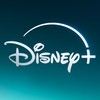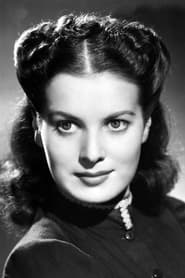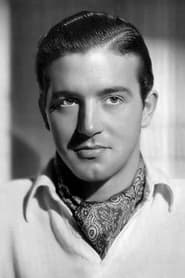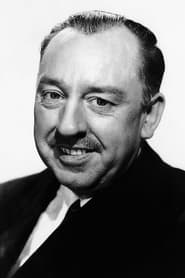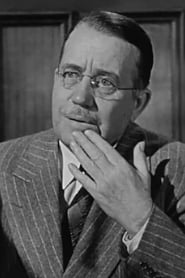Cast
View AllMaureen O'Hara
as Doris Walker
John Payne
as Fred Gailey
Edmund Gwenn
as Kris Kringle
Natalie Wood
as Susan Walker
Porter Hall
as Granville Sawyer
Philip Tonge
as Julian Shellhammer
Alvin Greenman
as Alfred (uncredited)
Harry Antrim
as R.H. Macy (uncredited)
James Seay
as Dr. Pierce (uncredited)
Jerome Cowan
as Thomas Mara
Gene Lockhart
as Judge Henry X. Harper
William Frawley
as Charlie Halloran
Lela Bliss
as Mrs. Shellhammer (uncredited)
Jack Albertson
as Postal Sorter Al (uncredited)
Sam Bagley
as Courtroom Spectator (uncredited)
Crew
Director
- George Seaton
Producer
- William Perlberg
Reviews
Peter McGinn
This is one of the classic holiday pics I will watch every year if it is available to me (Oh no; he said “holiday” instead of Christmas. Blasphemy!) So I will neither pick it apart nor praise it to the heavens. The story writing is strong and the ensemble cast do a good job. The fact that it has been redone so many times speaks for itself. I won’t even try to compare it to the other versions. Instead, as I read in the Pearls Before Swine comic strip, “The floot-floot did a boom-boom on the jim-jam.” (Another way of saying “It is what it is.”)
Dec 26, 2021
CinemaSerf
I suppose if anyone was ever to play the definitive Santa Claus, then it would have had to be Edmund Gwenn. The glint in his eye, the smile and the avuncular look all lends itself so very well to this tale of the Christmas nay-sayers! Set in the toy department of the legendary Macy's toy store in New York, we meet this character who steps in to help out at the city's famous parade after their existing "Santa" gets a bit too inebriated. An instant success with the crowd, he is hired to run the shop's grotto and soon sales are going through the roof. It turns out that he is none too loyal though, and when news reaches his bosses that he is advising the parents where better deals on their gifts can be obtained, things look a bit precarious - or has he hit on the ultimate PR idea! Success never comes alone and resentful of his success certain people engineer an altercation in which our "Kris Kringle" ends up in court. Insisting before learned judge "Harper" (Gene Lockhart) that he is really from the North Pole, what now ensues is a comical, sprightly-written, court-room drama that requires the prosecutor "Mara" (Jerome Cowan) to prove, conclusively, that - well... It is interesting that the posters gave top billing to Maureen O'Hara and to John Payne as neither character are really necessary as the story builds up into the ultimate test of what we believe - or, what we choose to believe. Gwenn is in his element and this is just one of those films that I think it's impossible not to like - at least once a year.
Dec 3, 2022
Thematic Analysis
As a dramatic work, Miracle on 34th Street examines complex human relationships and emotional struggles against the backdrop of a period setting that reflects societal issues of its time. The character development particularly stands out, offering viewers a chance to reflect on their own life journeys.
Director George Seaton brings their distinctive visual style to this film, continuing their exploration of themes seen in their previous works while adding new elements. Their approach to character development and emotional depth creates a viewing experience that rewards close attention.
Released in 1947, the film exists within a cultural context that now offers viewers historical perspective on the social issues of that era. Its critical acclaim reflects its artistic achievements and its place in cinema history.
Did You Know?
- The production of Miracle on 34th Street took approximately 19 months from pre-production to final cut.
- With a budget of $0.6 million, the film proved to be a financial success, earning back its investment and more.
- The final cut of the film runs for 96 minutes, though the director's initial assembly was reportedly 142 minutes long.
- Several scenes were filmed in multiple locations to capture the perfect setting.
- The musical score contains over 51 unique compositions.
- The film contains approximately 1551 individual shots.
Historical Context
- In 1947, when this film was released:
- The Cold War was intensifying, influencing global politics and culture.
- Rock and roll music was revolutionizing popular culture.
- The film industry was dominated by major studios, with independent cinema still in its early development.
How This Film Stands Out
While Miracle on 34th Street shares thematic elements with other films in its genre, it distinguishes itself through its unique approach to storytelling, visual style, and character development.
Unlike How Old Are You, which takes a more conventional approach to its subject matter, Miracle on 34th Street offers a fresh perspective through its innovative visual language and narrative structure.
While films like Blizzard and Meeting at the Tower explore similar territory, Miracle on 34th Street stands apart through its deeper exploration of its central themes and more complex characterization.
This film's unique contribution to cinema lies in its bold artistic choices and willingness to challenge viewer expectations, making it a valuable addition to its genre.
Details
- Release Date: June 4, 1947
- Runtime: 1h 36m
- Budget: $630,000
- Revenue: $2,700,000
Where to Watch
